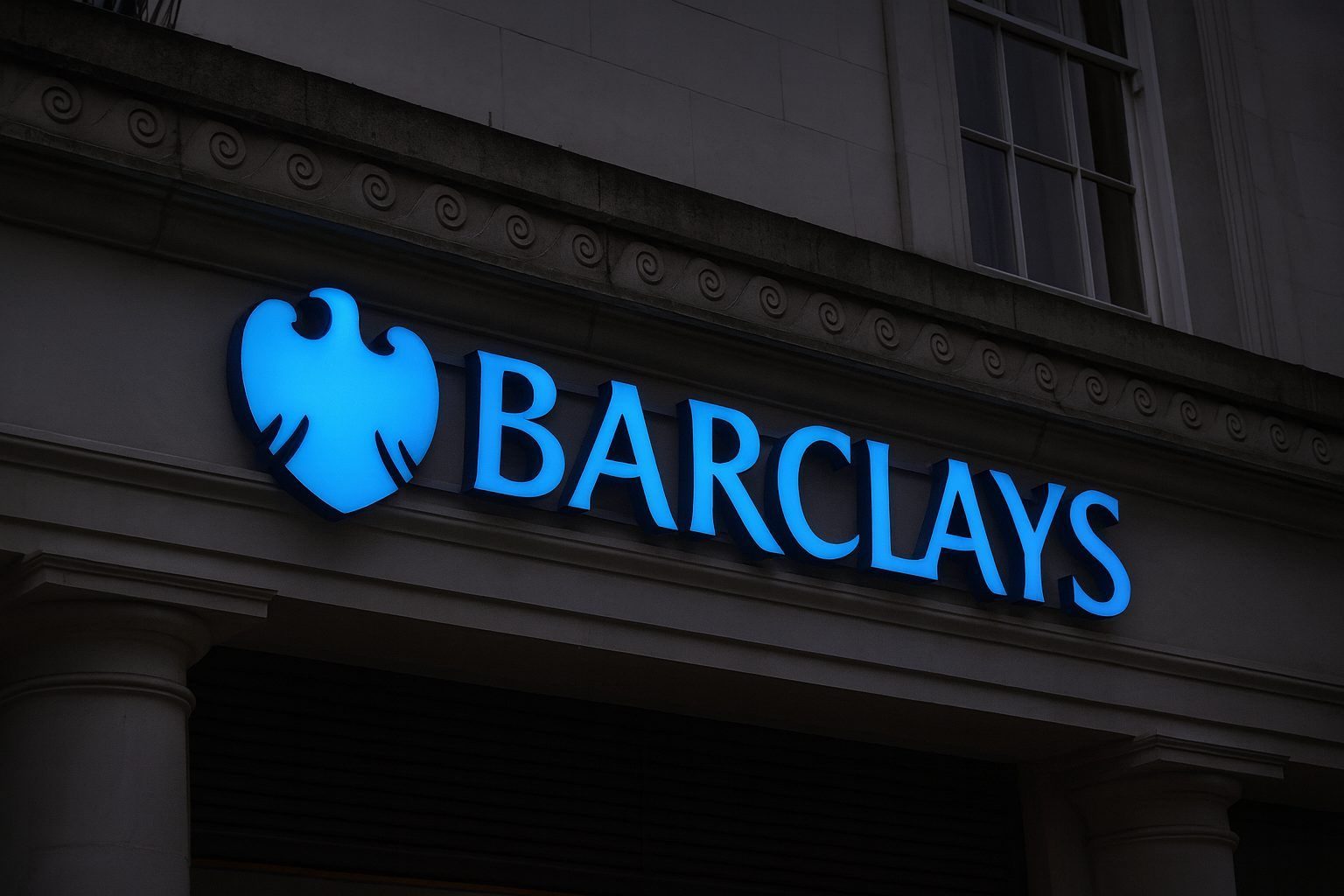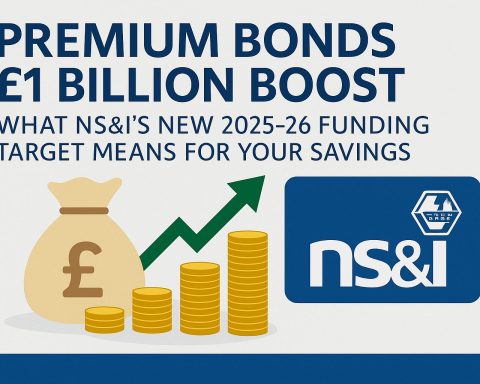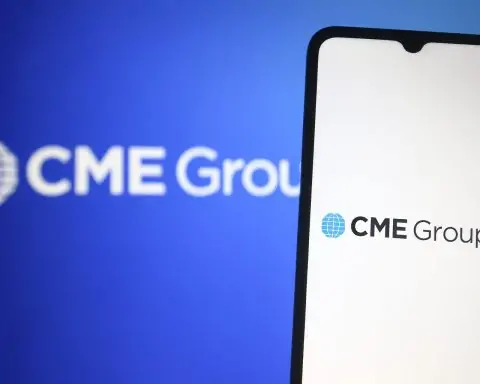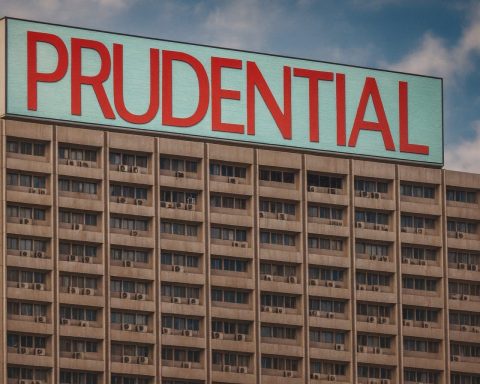Published: 28 November 2025
Barclays PLC stock is ending the week almost at record territory, with investors weighing an aggressive £1.5bn buyback programme, a powerful November rally, the symbolic challenge of being overtaken in value by fintech rival Revolut, and renewed headlines around former chief executive Jes Staley.
In London, Barclays shares closed around 431p, up about 0.23% on the day, after trading between roughly 429p and 432p and briefly touching a new year high near 432.35p, according to Hargreaves Lansdown data. [1] That leaves the FTSE 100 bank up roughly 66% over the past year and more than 60% year‑to‑date. [2]
On Wall Street, the New York–listed ADR, Barclays PLC (NYSE: BCS), was recently trading around $22.38, close to its 52‑week high of $22.64, with a 12‑month range running from about $12.14 to $22.64. [3]
Key points for Barclays investors on 28 November 2025
- Share price: BARC closes near 431p, flirting with a fresh 52‑week high after a rapid November rally from about 400p at the start of the week. [4]
- Capital returns: Barclays has completed a £1bn buyback and has started a new £500m programme, with another 2.34m shares bought for cancellation in the latest daily RNS. [5]
- Institutional demand: American Century Companies has boosted its stake in Barclays ADRs by 4.7% to about 3.48m shares, worth roughly $64.7m. [6]
- Macro backdrop: Barclays’ strategists say European equities are benefiting from Ukraine ceasefire hopes and a “tolerable” UK budget, even as they remain cautious on longer‑term UK equity prospects. [7]
- Competitive landscape: A new $75bn secondary share sale has pushed Revolut’s valuation above Barclays’ c.£59.9bn market cap, highlighting the pressure from high‑growth fintechs. [8]
- Reputational overhang: US banking regulators say they are “taking very seriously” allegations that major banks helped Jeffrey Epstein, including concerns raised about former Barclays CEO Jes Staley, who is already banned from UK banking. [9]
Barclays share price today: BARC holds its November breakout
Barclays’ London‑listed stock ended 28 November around 431p, modestly higher on the day and just above Thursday’s close of 429.95p. [10]
Key trading stats from the London close include: [11]
- Open: ~430.3p
- Intraday high: ~432.3–432.4p
- Intraday low: ~428.8–429.1p
- Close: ~431.0p
- Volume: just under 4m shares
- Market capitalisation: about £59.9bn
- P/E ratio: roughly 12x trailing earnings
- Dividend yield: about 2%
The move caps a striking week for the stock. Historic price data show Barclays has climbed from 400.6p at the close on 24 November to just above 430p by 28 November, a rise of roughly 7–8% in five trading days. [12]
Earlier in the week:
- On 24 November, Barclays traded just under 400p as investors processed buyback news, a £500m subordinated bond redemption, and the disclosure that the bank had crossed a 5% stake in Ubisoft. TechStock²+1
- On 25 November, the shares closed around 410p, up about 2.3%, as fears of a harsh new UK bank tax in the Budget eased. TechStock²+1
- On 26 and 27 November, the stock pushed into the low‑420s and then to roughly 430p, outpacing the FTSE 100 as the bank confirmed the completion of a £1bn buyback and the start of a new £500m programme. TechStock²+2MarketWatch+2
From a technical angle, recent data show Barclays is trading well above its 50‑ and 200‑day moving averages, with a 12‑month gain north of 60%, while still only a few percent above consensus target prices, suggesting the rally has been robust but not yet entirely detached from analyst expectations. [13]
Buyback “machine” still running: another 2.34m shares cancelled
The most concrete corporate news on 28 November itself came via a fresh “Transaction in Own Shares” announcement.
In a Regulatory News Service (RNS) filing, Barclays reported that it had purchased 2,338,117 ordinary shares on 27 November 2025 for cancellation, as part of the on‑market buyback programme launched on 23 October. [14]
Key details from the filing: [15]
- Number of shares repurchased: 2,338,117
- Price range:
- Highest: 430.80p
- Lowest: 422.00p
- Volume‑weighted average price: about 427.69p
- Post‑cancellation share count: 13,907,858,099 ordinary shares, with no shares held in treasury
This daily RNS sits within a much larger capital‑return story:
- On 27 November, Barclays confirmed it had completed a £1bn buyback programme launched in July 2025, having repurchased roughly 262.1m shares at an average price around 381.5p. [16]
- At the same time, the bank formally kicked off a new £500m buyback, authorised to repurchase up to about 1.17bn shares, though the real constraint is the cash cap and market conditions. [17]
Barclays has previously stated that it intends to return at least £10bn of capital to shareholders between 2024 and 2026, with a clear preference for buybacks over special dividends. [18]
Mechanically, these repurchases reduce the share count and, all else equal, lift earnings per share and support return‑on‑equity metrics. Investors appear to be rewarding that strategy: November’s rally has taken the stock from the high‑300p range to the low‑430s in less than a month. [19]
Big money flows: American Century boosts its Barclays stake
There was also notable news on the shareholder register side.
A new MarketBeat summary of SEC filings shows that American Century Companies Inc. increased its position in Barclays PLC (NYSE: BCS) by around 4.7% in the second quarter. The US asset manager now owns about 3.48m BCS shares, after buying an additional 155,397 shares. [20]
At recent prices, that stake is valued at roughly $64.7m and represents about 0.10% of Barclays’ share capital. [21]
While a single institution moving its weightings is rarely decisive on its own, this kind of incremental buying by a long‑only asset manager fits the broader pattern of international investors rotating back into European and UK banks after years of underperformance.
Macro backdrop: Barclays strategists see relief for European and UK assets
Beyond the bank’s own actions, a widely circulated Barclays strategy note has been making waves in markets today.
According to a write‑up on Investing.com, Barclays analysts argue that European equities have rebounded strongly on hopes of progress toward a U.S.‑brokered ceasefire in Ukraine, even though early rumours of a Thanksgiving‑timed peace deal did not materialise. [22]
Highlights from the note: [23]
- A “ceasefire beneficiaries” basket of European cyclicals has reached new highs as geopolitical tail‑risk appears to shrink.
- The UK Budget has delivered more fiscal headroom than expected, providing near‑term relief for UK assets, including bank stocks, even though tax rises could weigh on growth in 2026.
- Markets are now pricing around a 95% chance of a Bank of England rate cut in December, with Barclays’ economists expecting an additional cut early next year.
- Despite cheap valuations, the bank’s strategists remain cautious on UK equities longer term, pointing to structural headwinds and concerns about heavily back‑loaded fiscal consolidation.
For Barclays PLC, this macro view is a double‑edged sword:
- Lower rates and easing political risk typically support domestic credit demand, capital markets activity and broader risk sentiment—helpful for a universal bank with large UK, US and European franchises.
- But slower medium‑term growth and policy uncertainty may cap valuation multiples, especially after a 60‑plus‑percent rally over the past year. [24]
Revolut overtakes Barclays in valuation – a symbolic moment
Outside the stock market itself, a high‑profile secondary share sale at Revolut is sparking debate about how investors value “old” banks versus “new” fintech platforms.
Business Matters reports that Revolut has secured a $75bn valuation in a new Nvidia‑backed transaction, largely involving staff selling portions of their holdings. That marks a sharp jump from last year’s $45bn price tag and puts Revolut’s private valuation above Barclays’ current market cap, which sits around £59.9bn, or roughly $73bn at current exchange rates. [25]
The article notes that: [26]
- Revolut is now billed as Europe’s most valuable private tech company.
- Thousands of its more than 10,000 employees can sell up to 20% of their stake.
- The company has pledged to invest about £3bn in the UK over five years, adding around 1,000 new jobs.
From a Barclays shareholder’s perspective, the key takeaway is not that the bank is somehow “worth less” in a fundamental sense than Revolut, but that capital markets remain willing to pay tech‑style multiples for high‑growth digital finance platforms, even while traditional banks often trade close to book value.
The comparison underlines one of the central questions for Barclays’ equity story: can it persuade investors that its own digital capabilities, cost base and capital returns justify a valuation closer to global peers or high‑growth fintechs, rather than the discounted multiples that UK banks have endured for most of the past decade?
Governance and litigation overhang: Epstein, regulators and ex‑CEO Jes Staley
The freshest reputational headline tied to Barclays today doesn’t involve the bank directly, but its former chief executive Jes Staley.
An investigation by The Guardian reports that US regulators, including the Office of the Comptroller of the Currency and the Federal Deposit Insurance Corporation, have told Senator Elizabeth Warren that they are treating allegations about banks’ connections to Jeffrey Epstein “very seriously.” [27]
The letter from Senator Warren urged regulators to examine whether senior bankers—including Staley, who previously worked at JPMorgan and later led Barclays—helped Epstein maintain access to the financial system. Staley has already been banned from the UK banking sector for misleading regulators about the nature of his relationship with Epstein. [28]
In their response, the US agencies did not confirm whether formal enforcement actions are underway, but they indicated they would act on any potential misconduct uncovered. [29]
For Barclays investors, the practical implications today are limited:
- Staley left the bank several years ago, and UK regulators have already imposed sanctions on him personally.
- There is no new allegation in this report that Barclays itself faces fresh penalties.
However, the story keeps legacy governance issues in the headlines, which can matter at the margin for global investors who are increasingly sensitive to environmental, social and governance (ESG) scores when allocating capital to financial institutions. [30]
Strategic positions: Ubisoft stake, Saudi expansion and structured products
While 28 November’s headlines focus on buybacks and macro commentary, several recent moves continue to shape how investors see Barclays’ medium‑term strategy:
- Ubisoft stake above 5%
Filings with the French markets watchdog show that, as of mid‑November, Barclays has crossed the 5% ownership threshold in Ubisoft, holding around 6.76m shares, or roughly 5.02% of the video‑game publisher’s capital and 4.55% of voting rights via cash positions and assimilated holdings. [31]
This position appears to be a trading and capital‑markets exposure rather than a classic strategic stake, but it underlines the bank’s ability to deploy balance sheet into structured equity trades and derivatives. - Restarting investment banking in Saudi Arabia
In October, Barclays confirmed plans to restart investment banking operations in Saudi Arabia, opening a new office in Riyadh as part of its Middle East growth strategy. [32]
Re‑entering one of the world’s most active markets for sovereign wealth and energy‑related deals could support fee income in the investment bank over coming years. - Ongoing structured note issuance
Regulatory filings in recent days highlight that Barclays Bank PLC continues to issue a range of structured notes and autocallable products linked to indices such as the Dow Jones Industrial Average, S&P 500 and European equity baskets, with several instruments dated 28 November 2025. [33]
These instruments feed fee income and funding diversification, though they also add complexity to the group’s risk profile.
Taken together, these moves reinforce the picture of Barclays as a full‑service universal bank, combining UK retail and business banking with a sizeable global investment banking and markets franchise. [34]
Valuation, analyst views and risks
At around 431p, Barclays now trades close to where many analysts expected it to reach over a 12‑month horizon. MarketScreener’s aggregation of broker research shows: [35]
- A mean analyst rating of “Buy”, based on about 14 covering analysts.
- An average target price near 452p, implying roughly 5% upside from Thursday’s close around 430p.
- Barclays’ share price up about 63–64% over the past year, versus a much smaller gain in the broader UK market.
Key upside drivers investors are watching:
- Capital returns: Execution of the £500m buyback and clarity on 2026 distribution plans. [36]
- Interest‑rate path: How quickly the Bank of England eases policy and what that means for net interest margins. [37]
- Investment bank performance: Whether the US and global franchises can maintain fee momentum in ECM, DCM and advisory amid changing market conditions. [38]
- Cost control and credit quality: Especially in UK consumer lending and US card portfolios, which are sensitive to recession risk. [39]
Key risks that could challenge the current rally:
- Macro shocks (e.g., a renewed spike in inflation, a disorderly downturn or geopolitical escalation) that hit credit quality or market‑making revenues. [40]
- Regulatory surprises, whether new UK bank taxes in future budgets or additional conduct fines in legacy cases. [41]
- Competitive pressure from both domestic rivals and capital‑light fintechs like Revolut that may constrain fee growth in payments and consumer finance. [42]
Bottom line: Barclays on 28 November 2025
By the close of 28 November 2025, Barclays PLC stock sits near the top of its 52‑week range, powered by a large‑scale buyback, improving sentiment on UK banks after a less‑punitive Budget, and a broader shift back into European financials. [43]
At the same time, the day’s newsflow highlights the complex mix of forces around the stock:
- Supportive: Ongoing cancellations of millions of shares, constructive analyst views, and a macro narrative that is edging from fear toward cautious optimism. [44]
- Challenging: Symbolic pressure from a $75bn‑valued fintech competitor, lingering governance stories involving a former CEO, and the ever‑present risk that the economic cycle turns against highly cyclical bank earnings. [45]
For now, Barclays remains one of the standout recovery stories in the European banking sector—but at these levels, the market is clearly beginning to price in a lot of that good news.
References
1. www.hl.co.uk, 2. www.hl.co.uk, 3. www.investing.com, 4. www.hl.co.uk, 5. www.sharesmagazine.co.uk, 6. www.marketbeat.com, 7. www.investing.com, 8. bmmagazine.co.uk, 9. www.theguardian.com, 10. www.hl.co.uk, 11. www.hl.co.uk, 12. www.sharesmagazine.co.uk, 13. www.digrin.com, 14. www.investegate.co.uk, 15. www.investegate.co.uk, 16. www.sharesmagazine.co.uk, 17. www.directorstalkinterviews.com, 18. home.barclays, 19. uk.advfn.com, 20. www.marketbeat.com, 21. www.marketbeat.com, 22. www.investing.com, 23. www.investing.com, 24. uk.marketscreener.com, 25. bmmagazine.co.uk, 26. bmmagazine.co.uk, 27. www.theguardian.com, 28. www.theguardian.com, 29. www.theguardian.com, 30. uk.marketscreener.com, 31. hk.marketscreener.com, 32. www.marketscreener.com, 33. www.stocktitan.net, 34. uk.marketscreener.com, 35. uk.marketscreener.com, 36. www.directorstalkinterviews.com, 37. www.investing.com, 38. uk.marketscreener.com, 39. uk.marketscreener.com, 40. www.investing.com, 41. www.sharesmagazine.co.uk, 42. bmmagazine.co.uk, 43. www.hl.co.uk, 44. www.investegate.co.uk, 45. bmmagazine.co.uk









